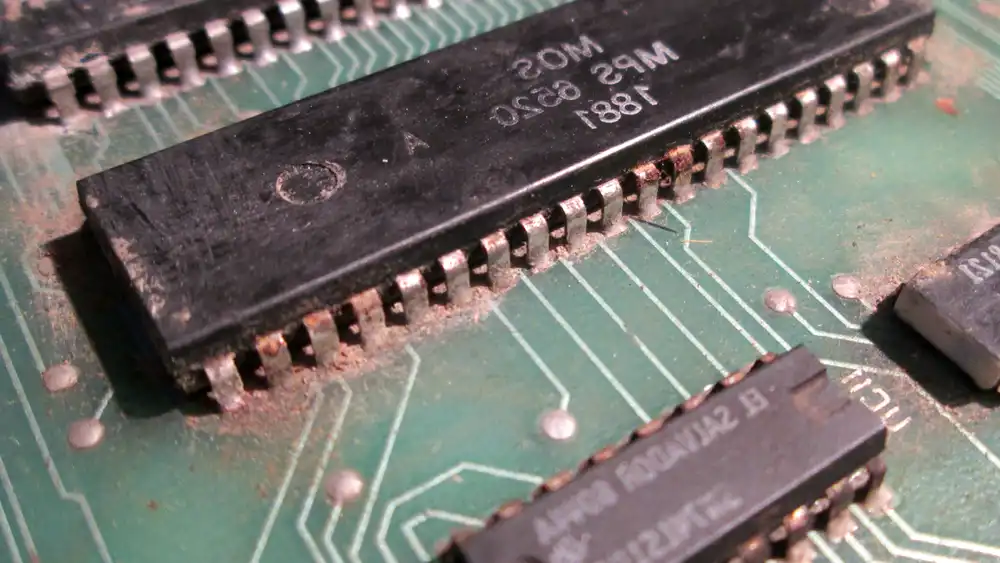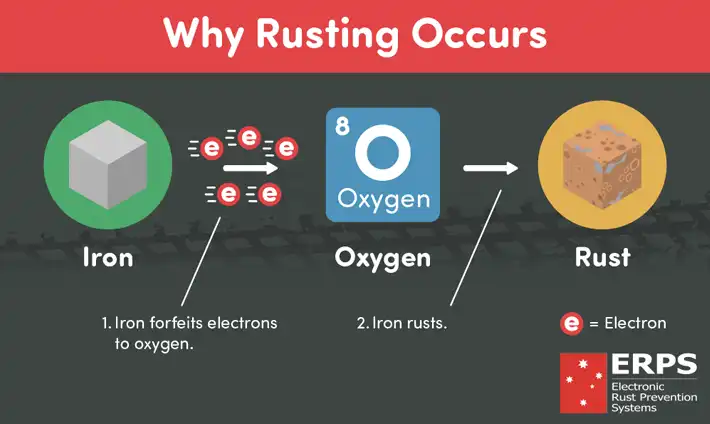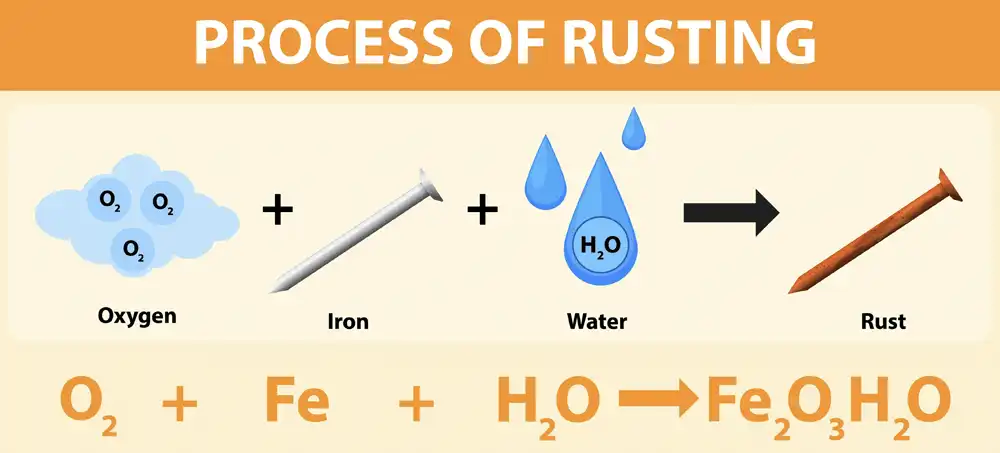Rust on electronic components can be a nightmare for any gadget enthusiast or technician. Not only does it affect the appearance of the device, but it can also impair its functionality and lifespan. However, with the right knowledge and techniques, you can effectively remove rust and prevent its recurrence.
In this comprehensive guide, we’ll delve into various methods and tips for safely eliminating rust from electronic components and ensuring the longevity of your devices.
Signs of Rust on Electronic Components

Rust on electronic components manifests as reddish-brown discoloration or powdery residue. It often occurs in areas exposed to moisture or humidity, such as connectors, circuit boards, and metal casings. Common signs include erratic device behavior, poor connectivity, and visible corrosion.
Rust not only compromises the aesthetic appeal of your electronics but also poses a risk of short circuits and component failure. Therefore, it’s crucial to address rust issues promptly to prevent further damage.
Why Rust Occurs

Electronic component rust occurs due to a combination of environmental factors and the inherent properties of metals used in electronic devices. Understanding the underlying causes of rust formation is crucial for implementing effective preventive measures and preserving the integrity of electronic components.
Here are the primary reasons why electronic component rust occurs:
1. Exposure to Moisture: Moisture is a key catalyst for rust formation on electronic components. When metal surfaces come into contact with moisture, particularly in the presence of oxygen, a chemical reaction known as oxidation occurs, leading to the formation of rust. Electronic devices exposed to humid environments or subjected to water ingress are especially vulnerable to rusting.
2. Oxygen Availability: Oxygen is essential for the oxidation process that results in rust formation. In electronic devices, oxygen present in the air reacts with metal surfaces, initiating the corrosion process. Components with exposed metal parts, such as connectors, terminals, and casings, are particularly susceptible to rusting due to their direct exposure to atmospheric oxygen.
3. Metal Composition: The composition of metals used in electronic components influences their susceptibility to rust formation. Ferrous metals, such as iron and steel, are highly prone to rusting due to their iron content. Other metals commonly used in electronic devices, such as copper and aluminum, may also corrode under certain conditions, albeit to a lesser extent than iron-based alloys.
4. Environmental Conditions: Environmental factors such as temperature, humidity, and exposure to corrosive substances play a significant role in electronic component rust formation. High humidity levels, salty air, industrial pollutants, and chemical fumes can accelerate corrosion processes, exacerbating rusting in electronic devices.
5. Surface Contamination: Contaminants such as dust, dirt, oils, and salts can accumulate on electronic component surfaces, promoting corrosion and rust formation. These contaminants provide an ideal environment for moisture retention and chemical reactions, accelerating the degradation of metal surfaces over time.
6. Improper Storage and Handling: Improper storage and handling practices can exacerbate the risk of electronic component rusting. Storing devices in damp or humid environments, exposing them to water or corrosive substances, or neglecting maintenance and protective measures increase the likelihood of rust formation and corrosion-related damage.
Causes of Rust Formation

Rust formation occurs due to a combination of environmental factors and the composition of electronic components. Understanding these causes is crucial for effectively preventing and addressing rust issues.
Here are the primary factors contributing to rust formation on electronic components:
1. Environmental Humidity:
High levels of humidity in the surrounding environment accelerate the oxidation process, leading to rust formation on metal surfaces. Electronic devices exposed to humid conditions are particularly vulnerable to corrosion.
2. Improper Storage Conditions:
Storing electronic devices in damp or poorly ventilated areas increases the risk of rust formation. Moisture can accumulate inside devices, promoting the corrosion of metal components over time.
3. Exposure to Water:
Direct contact with water or other liquids can initiate the rusting process on electronic components. Accidental spills, condensation, or exposure to moisture in the air can all contribute to rust formation, especially in unprotected devices.
4. Corrosive Substances:
Exposure to corrosive substances such as salts, acids, or cleaning chemicals can accelerate rust formation on electronic components. These substances promote oxidation and corrosion, leading to surface damage and degradation of device performance.
5. Metal Composition:
The composition of metals used in electronic components can influence their susceptibility to rust formation. Metals such as iron and steel, commonly found in connectors, screws, and casings, are prone to oxidation when exposed to oxygen and moisture.
6. Lack of Protective Coatings:
Electronic components without adequate protective coatings or finishes are more susceptible to rust formation. Coatings such as nickel plating, anodizing, or polymer seals provide a barrier against moisture and oxidation, reducing the risk of rusting.
Impact of Rust on Electronic Devices
Rust, a common form of corrosion, can have significant detrimental effects on electronic devices, compromising their functionality, reliability, and lifespan. Understanding the impact of rust is essential for addressing corrosion issues promptly and preserving the performance of electronic components. Here are some of the key consequences of rust on electronic devices:
1. Electrical Connectivity Issues: Rust can interfere with electrical conductivity, impeding the flow of current between components. Corroded connectors, terminals, and contacts may exhibit increased resistance or intermittent connectivity, leading to erratic device behavior, signal degradation, or complete electrical failure.
2. Component Degradation: Rust can degrade the structural integrity of electronic components, particularly metal-based parts such as connectors, circuit traces, and solder joints. Over time, corrosion weakens these components, making them susceptible to mechanical failure, breakage, or detachment, which can compromise device performance and reliability.
3. Circuit Malfunction: Rust formation on circuit boards or traces can disrupt the flow of signals and alter the electrical properties of circuits. This can result in circuit malfunction, signal distortion, or short circuits, leading to device malfunction, data loss, or irreversible damage to sensitive electronic components.
4. Increased Heat Generation: Corrosion on electrical contacts or conductive pathways can increase resistance, leading to higher levels of heat generation during device operation. Elevated temperatures can accelerate component degradation, reduce operational efficiency, and pose a risk of thermal damage to surrounding components or circuitry.
5. Aesthetic Degradation: In addition to functional issues, rust detracts from the visual appeal of electronic devices, giving them a weathered or unkempt appearance. Surface corrosion on external casings, connectors, or exposed metal parts can diminish the perceived value of the device and negatively impact user experience.
6. Safety Hazards: Severe rusting in electronic devices can pose safety hazards, especially in critical applications or high-voltage environments. Corrosion-induced shorts, insulation breakdown, or component failure may result in electrical hazards, fire risks, or personal injury, highlighting the importance of addressing rust issues promptly.
How to Remove Rust From Electronic Components
Rust removal requires careful attention to prevent further damage to the affected components. Here are some effective methods for safely eliminating rust from electronic devices:
1. Isopropyl Alcohol Cleaning
Using isopropyl alcohol and a soft brush or cloth, gently clean the rusted areas to remove surface corrosion. Ensure the device is powered off and disconnected from any power source before cleaning.
2. White Vinegar Soaking
Submerge the rusted components in white vinegar for several hours to dissolve the rust. After soaking, gently scrub the affected areas with a soft brush and rinse thoroughly with distilled water.
3. Abrasive Paste Application
Apply a commercial rust remover or DIY abrasive paste made from baking soda and water to the rusted surfaces. Use a soft brush or sponge to scrub the paste into the rust, then rinse and dry the components thoroughly.
4. Electrolytic Rust Removal
Electrolytic rust removal involves immersing the rusted components in an electrolyte solution and applying a low-voltage electrical current to induce electrolysis. This process effectively removes rust without damaging the underlying metal.
5. Mechanical Polishing
For stubborn rust deposits, mechanical polishing with fine-grit sandpaper or a rotary tool equipped with a polishing attachment can be effective. Exercise caution to avoid damaging delicate electronic components.
6. Protective Coating Application
After removing rust, apply a protective coating such as clear nail polish or silicone conformal coating to prevent future corrosion. Ensure the coating is compatible with electronic components and does not interfere with their operation.
Preventing Rust Formation: Tips for Electronic Device Maintenance
Prevention is key to avoiding rust formation and preserving the functionality of electronic devices. Here are some preventive measures to safeguard your gadgets against corrosion:
1. Proper Storage
Store electronic devices in a dry, climate-controlled environment away from moisture, dust, and corrosive chemicals. Use protective cases or covers to shield devices from environmental factors.
2. Moisture Absorbent Packs
Place moisture absorbent packs or silica gel sachets in device storage areas to reduce humidity and prevent condensation. Replace the packs regularly to maintain their effectiveness.
3. Regular Inspection and Maintenance
Periodically inspect electronic devices for signs of rust or corrosion, especially in vulnerable areas such as battery compartments and connectors. Clean and maintain devices according to manufacturer guidelines to prevent rust formation.
4. Humidity Control
Invest in dehumidifiers or moisture control devices to maintain optimal humidity levels in storage areas, particularly in regions with high humidity climates.
5. Avoid Exposure to Water
Handle electronic devices with care and avoid exposing them to water or moisture, especially during cleaning or maintenance. Use protective covers or waterproof cases for devices used in outdoor or wet environments.
6. Use Corrosion Inhibitors
Apply corrosion inhibitors or protective coatings to electronic components susceptible to rust formation. These coatings create a barrier against moisture and oxidation, extending the lifespan of the devices.
FAQs (Frequently Asked Questions)
- How does rust affect electronic components? Rust can corrode electrical contacts, degrade solder joints, and compromise circuitry, leading to device malfunction and failure.
- Can I use household products to remove rust from electronic components? Yes, household items such as white vinegar, baking soda paste, and isopropyl alcohol can be effective for rust removal from electronic devices.
- Is electrolytic rust removal safe for electronic components? Electrolytic rust removal is generally safe for electronic components if performed correctly, following recommended guidelines and precautions.
- How often should I inspect electronic devices for rust? It’s advisable to inspect electronic devices periodically, especially before and after prolonged storage or exposure to humid conditions.
- What are the best practices for storing electronic devices to prevent rust formation? Store electronic devices in dry, climate-controlled environments away from moisture, dust, and corrosive substances, using protective covers or cases when necessary.
- Are there any DIY methods to prevent rust on electronic components? Yes, DIY methods such as applying protective coatings, using moisture absorbent packs, and maintaining optimal humidity levels can help prevent rust formation on electronic devices.
Conclusion
Removing rust from electronic components requires patience, precision, and the right tools and techniques. By following the methods outlined in this guide and implementing preventive measures, you can effectively eliminate rust and prolong the lifespan of your electronic devices. Remember to inspect and maintain your devices regularly to prevent rust formation and ensure optimal performance.
Don’t let rust compromise the functionality of your electronic gadgets. Take proactive steps to protect and preserve your devices, ensuring they remain in top condition for years to come.




















